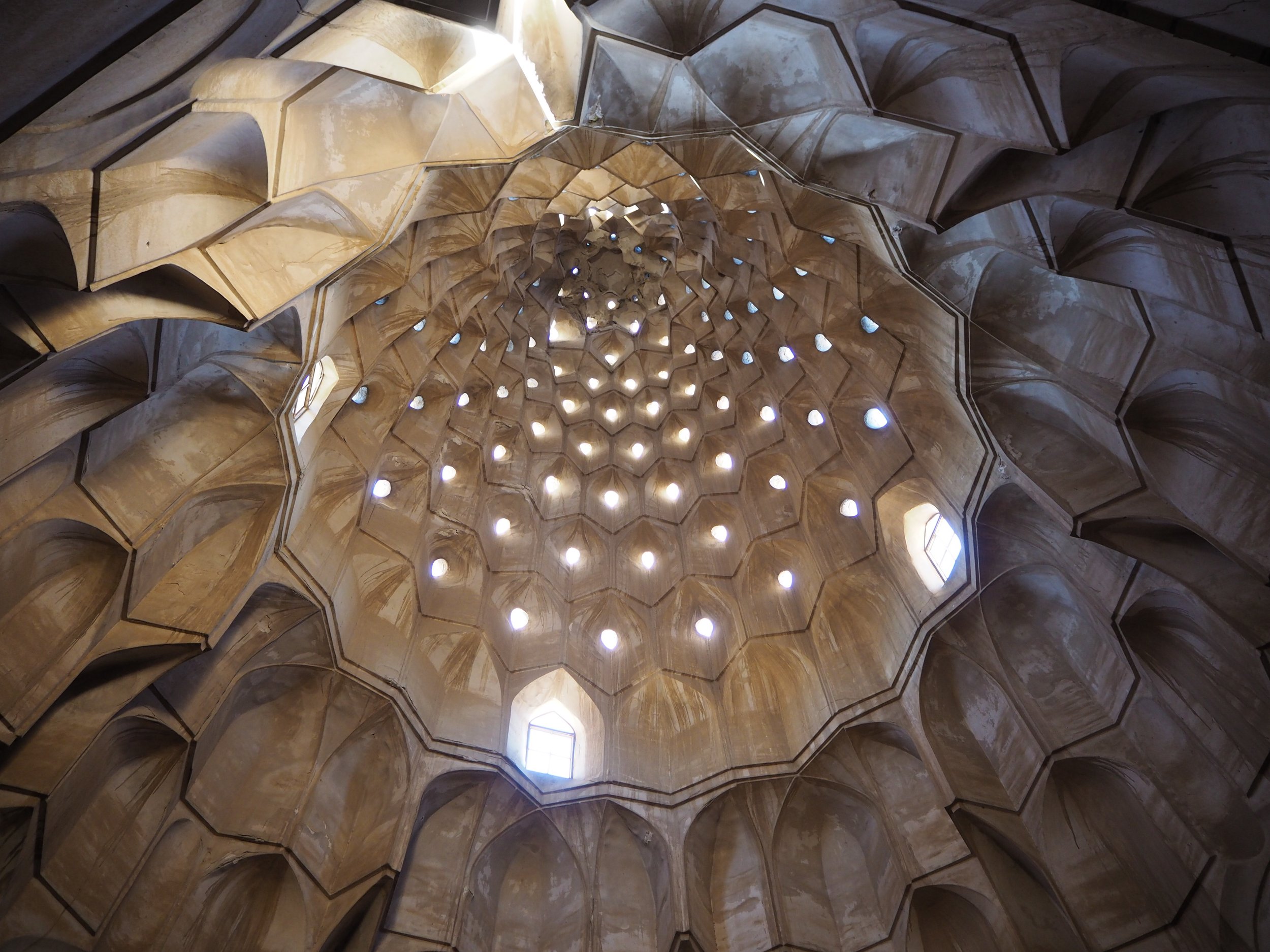
Sitt Zumurrud Khatun’s Mausoleum
Sitt Zumurrud Khatun’s mausoleum & the shrine of Sheikh Maarouf al-Kharkhi
One of Baghdad’s striking central landmarks is the elegant mausoleum of Sitt Zumurrud Khatun. Sometimes described as one of the capital’s most important pieces of architecture, the mausoleum lies in one corner of a sprawling cemetery near the mosque and shrine of Sheikh Maarouf al-Kharkhi.
The (locked) cemetery entrance is at the end of a cul-de-sac. From a security perspective, it’s not an ideal walk and, on our first attempt, we had an unenjoyable experience which leads us to advise against going it alone on foot without an Iraqi guide or friend.
Overall, we suggest visiting the shrine of Sheikh Maarouf first. The unusual architecture, elegant shrine and pleasant views makes it well worth a visit anyway and, once there, you can ask for the key-holder’s number (staff may call him for you, if you don’t speak Arabic) so he is expecting you and might even walk to meet you. If no English is spoken by staff there and you have no translator, we believe it’s possible to explain your desire to visit the mausoleum with hand gestures and by pointing to the mausoleum’s conical tower, which is visible from outside the shrine.
Modest attire is required for both men and women at the Sheikh Maarouf shrine, and women should wear a headscarf and abaya. Technically they don’t have abayas to lend but they managed to rustle one up for us. Women should not enter the shrine through the main doors but should veer left, walking around the outside of the building and entering the shrine through a separate door. A wooden screen separates the male and female sections.
To reach Sitt Zumurrud Khatun’s mausoleum, when facing the gated external entrance to the shrine of Sheikh Maarouf, walk to the left and take the first road on your right. Walk past a (different) cemetery entrance on your left, to the end of this road, which is blocked off by a big wall.
The gate into the cemetery (on your right when facing the wall) is small but bears a sign (in Arabic) giving details of how to gain entry, including the key-holder’s number written in English numerals. The key-holder’s house is to the right of the gate and he will unlock the cemetery gate and accompany you to the mausoleum.
The mausoleum is treated as a sacred pilgrimage site by some visitors, so women may find it respectful to wear a headscarf, although we understand this isn’t obligatory. If there are plastic chairs near the cemetery gate, be particularly quiet and respectful, as it likely means there’s a funeral underway.
Sitt Zumurrud Khatun (the wife of one Abbasid Caliph and the mother of another) oversaw the construction of this - her own mausoleum - amongst other architectural projects in Baghdad. The result is stunning, especially from inside, where dappled sunlight falls in through the tiny windows embedded in its unusual nine-layered muqarnas (ornamental vaulting in Islamic architecture) dome, which “transforms itself from an octagon into a 16-sided figure and back again.” (1)
It may be possible (with the key-holder’s permission) to make the steep climb up the mausoleum’s narrow steps to the base of the tower, although care should be taken if making this ascent.
The tower affords fine views over the city, including an overgrown area towards the train station where hundreds of unknown Iraqis were hastily buried, without headstones, during the chaos and unrest which followed the 2003 US-led invasion of Iraq.
(1) From Iraq: the Ancient Sites & Iraqi Kurdistan, published by Bradt.